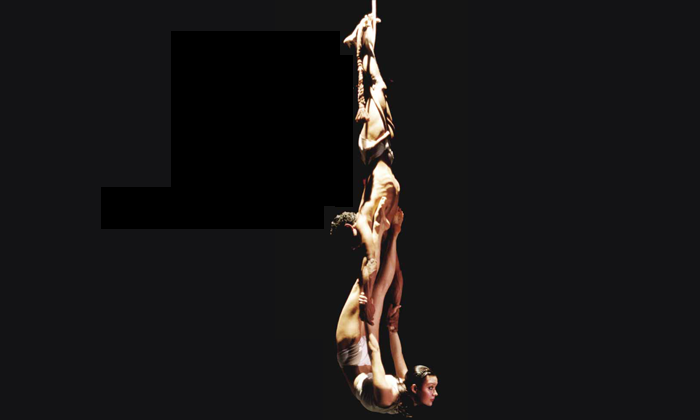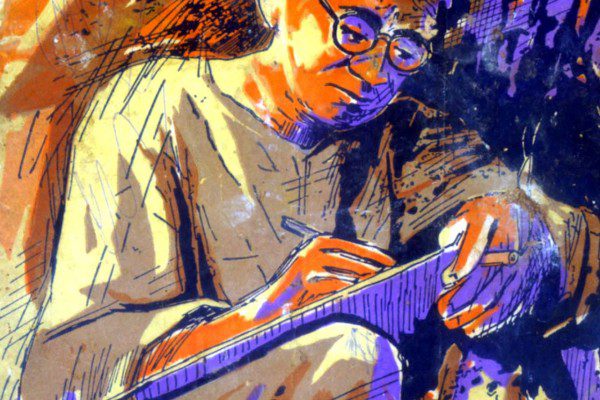What is the idea of spine to you? If a spine is the axis, then can a bend, in a dancer’s terminology, imply shifting away from the axis?
Spine is actually the soul of dance. Spine is the soul of existence. Even in meditation, if you want to reach the seventh chakra, you have to reach it through the spine. It is like, what do you call it… the chakkri or the top. A top rotates beautifully, but only when the axis is firm. So unless you have worked on the spine, evolved as a dancer, your spine isn’t strong enough. The whole energy flow of a dancer is from the spine. What the audience sees is just the fluidity of the body movement. But the actual dance happens around the spine. So, how good you are as a dancer really depends upon on the flexibility, energy flow and grace that a spine has developed over a period of time. And then of course, the balance that it brings. A posture may call for your spine to be strong, but need an elevated and lifted look. So by incorporating balance along with the strength of your spine, you will need less overall muscle action and create an excellent space in which your spine can function. So you see, dance, at least to me, is the complete understanding of the spine and its scope of movement.
How do you train your students to develop and strengthen their spine movements?
That’s where we bring the martial arts in. Kalaripayattu is a martial art from Kerala. Recently, Mallakhamb, that is rope training, has been very useful in developing arms and stomach muscles. We have also been pioneers in aerial dance forms. One is pole exercise, which is for the boys. I tried to train Isha, my daughter in that, but it was too complicated. If she says it’s hard, it’s really hard. The other is rope training. It’s more comfortable for the girls. Women are more flexible than men. But I have also seen that some men are extremely flexible. Another method we use is the hanging pole. It is even more difficult. The pole is suspended. When you grip the pole, it starts swinging. I was totally floored when I saw it for the first time in Gujarat. I thought, if my dancers start doing this, then the process of developing themselves would be much quicker. The truth is, it is so difficult, that most people give up. The pole is actually the symbol of a partner in kusti. Instead of going to a gym, you go to an akhada which is like a traditional gym. See, I usually like people with Bharatanatyam background, because in the kind of dancing I do, I like squatting a lot. At the same time, when they join us, I train them in a different way. I don’t like dancers with too many years of training in a particular dance form. There’s a mental block too, when they move in one style. To unlearn what you have already done is very tough. As soon as the dancers join us, I give them training in yogasanas, gymnastics and Kalari. They let loose and are able to adapt to new styles then. Kalari has certainly become a valuable training to our company and every day after the first warm-up session, there’s always a Kalari session. The one thing that is important to us is not just to present Kalari as Kalari. It is to really master it to the point when it becomes embedded in the body, it is not just what you are putting on, but is part of the way in which the body works.
In Sarpagati– The Way of the Serpent, you use sensual movements like that of a snake’s spine. Where do you find the lakshaman rekha between how much to reveal and how much not to reveal in front of the audience? Does it play on you that the audience is a voyeur, a co participant?
You don’t have to deal with sensuality. You deal with it when it is a part of the subject. You don’t have to prove it’s sensual or sexual. That’s a different attitude all together and not my attitude. You aren’t out there with a flag to say that I’m doing this because I want to do it. I do it because I love the concept. I believe in it. I’m not even doing it to prove it to myself. Initially, Sarpgati was quite shocking for the people. Though the audience loved it, I was told it was like pornography, that it should be banned. People wrote that my dancers wore langot. I used to dance what Isha Sharvani, my daughter does now in my place, but I used to wear leotards. After the first four shows in Mangalore and Bombay, we had to put the production on hold for two years, because nobody wanted to see us. So we were just doing our own work, being happy in our studios and we rarely got any concerts. We believe in ourselves and go ahead and do what we want to do. Then, somebody in Europe invited us and we had to revive Sarpagati all over again. It was an incredible success in Germany. After hearing that we had done very well in Germany, we were invited to various festivals internationally. Suddenly, we started getting invitations from people in India as well. In art and its conceptualisation, no lines can be drawn. You start on a clean slate and try to recreate something that was just an idea in the mind. No lines should be drawn. Isn’t that what ‘having a spine’ is all about?
Chandralekha, the iconic dancer was once asked in an interview: ‘Didn’t you ever want to have children?’ And Chandra said that she was ‘proud of her undrunk breasts’? How was it for you after two children? Did motherhood diminish your body or did it elevate it?
Well, I think it was Chandralekha’s view and it should stay with her. I have had two children and the experience has nothing but enriched me. It’s made me less selfish. I no longer think just about myself. As a woman, as a person, as a dancer; you become a much better human. It relaxes you. After childbirth, a body goes through a lot of changes. Obviously, childbirth is very difficult. But that strengthens you, emotionally too. Even for cats, dogs and horses. I worked on my body through yoga and Kalaripayattu. And work with my body as well, as I could work with it before.
With performances like Search for My Tongue, have you ever tried to make a political statement through dance?
I have absolutely no desire for politics. That is very much Chandra. I don’t think I’m interested in mixing politics and dance. You do what you want to do. You don’t have to make big statements about your political views or about how moralistic you are. You don’t have to prove anything. You can’t come from a point of view of superiority and talk about art. It’s just your mind, body and spirit. It’s pure, unadulterated. Nothing else.
Your dance school is located in middle of a man-made forest? Why did you choose this forest in Trivandrum as your base? Do you end up imbibing the nature in your dance as well?
One of the major reasons why I chose Trivandrum is because my Kalari guru lives in Trivandrum. I’m very particular about choosing my guru, because for me the most vital thing is to have a bond of mutual respect with my guru. There were many good teachers, but I felt I could not communicate with them, because I was learning Kalari not to perform, but to understand my own body through martial training. We have a beautiful piece of land by the lake; it is 2 acres with about 100 coconut trees that we planted ourselves. It’s a beautiful space to work in and we have a studio as well. And yes, several of our productions were composed here. Sarpagati was inspired by the snakes moving around our villages and worship of these snakes. In the piece, after the snake’s death, the serpent is transformed into the golden bird, and with the birth of compassion, the path of the higher chakras commences. So you see, Sarpgati draws upon these rituals, myth and symbolism that is associated with a snake.
The spine could be a great metaphor for freedom. Just holding your spine erect is an act of resistance…
Ah, I lived in remote villages with my husband in Orissa and Bihar with my baby in my arms, to learn chhau. I would train through the day, and sometimes be in severe pain. It was extremely difficult back then to break into this male-dominated territory. But I emerged as the first Indian woman to perform chhau as a soloist. I never forced my children to take it up either. You know, our children, they don’t even carry our names. You can call me a rebel, but I also started the contemporary dance work not as a cancellation of tradition. I still dance traditional Kathak. I can still perform traditional dance very well. I was a Krishna bhakt and wanted to do Krishna seva through my dance. So I stayed on in Vrindavan with my two children for three years. They grew up in a temple, got home tutored and learnt things by example. I don’t think anybody knows about that part of my life, what a traditional life I have led. I have tremendous respect for tradition and if I did not have this solid Kathak background, I don’t think I would be able to do what I’m doing now. Making these choices came naturally to me. Now that takes spine too, doesn’t it?


